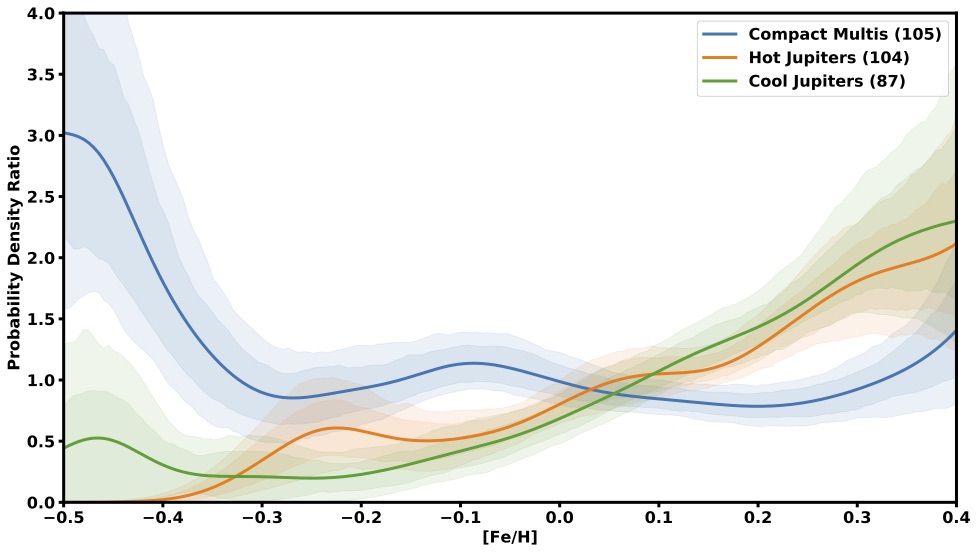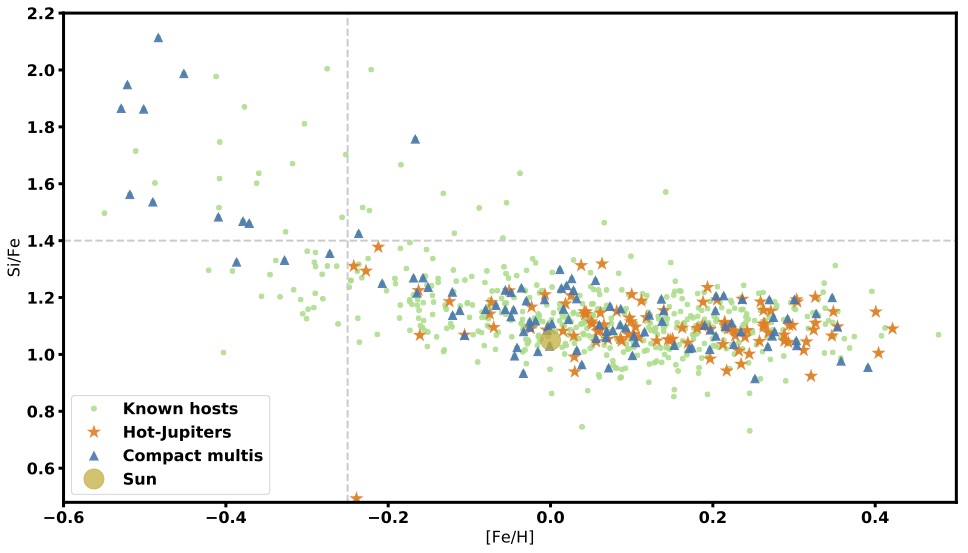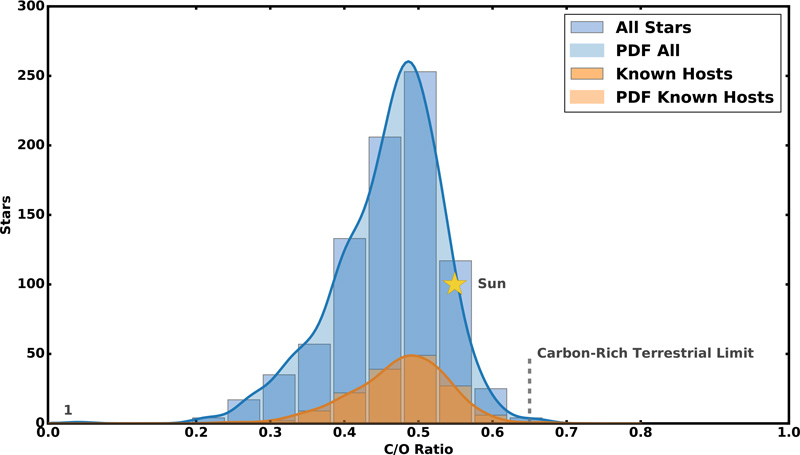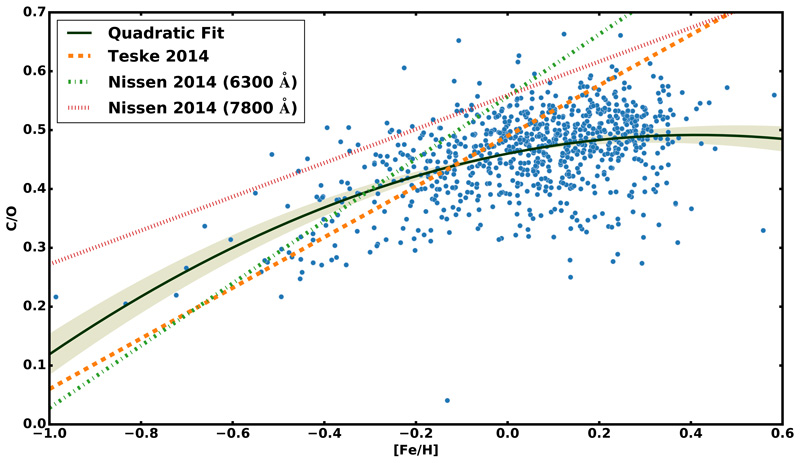Plots lifted straight from a paper don't always look great on screen. Here are some important plots from my recent papers reformatted for presentations. Feel free to use them.

Ratio of Planet Architecture to Known Planet Hosts for [Fe/H]
Hot and cool Jupiter mass planets increase in frequency with increasing [Fe/H] (or metallicity), which has been observed since shortly after the first planets were discovered (i.e. the Giant planet metallicity correlation). Here, we see that for most of our metallicity range, compact systems of multiple planets (3 or more orbiting within 1 au) are a relatively steady fraction of known hosts. However, they make up a dramatically increasing fraction at lower metallicities.

Si/Fe vs. Metallicity
The increasing occurence rate of compact multi-planet systems at low metallicities might instead be due to the increasing Si/Fe ratio. There are very few observed thick disk stars that may have both high [Fe/H] and high Si/Fe. The high Si/Fe ratios at low [Fe/H] is expected and provides supporting evidence that these stars are indeed low [Fe/H] stars and not just artificially low due to the effects of diffusion.

C/O Distribution of Planet Search Stars
None of the 849 F, G, and K dwarfs in this sample of planet search stars has C/O > 0.7. This distribution is in agreement with galactic chemical evolution models and means that the likelihood of finding diamond planets is quite low. It does, however, mean that the Mg/Si ratios of these stars can tell us about the geology of any rocky planets in the system.

C/O vs. Metallicity
Previous studies have shown a correlation between metallicity (as measured by [Fe/H]) and the C/O ratio. Our sample largely agrees at [Fe/H] < -0.1, but seems to flatten out for more metal rich stars. This also agrees with galactic chemical evolution models that expect C/O ratios to plateau.
